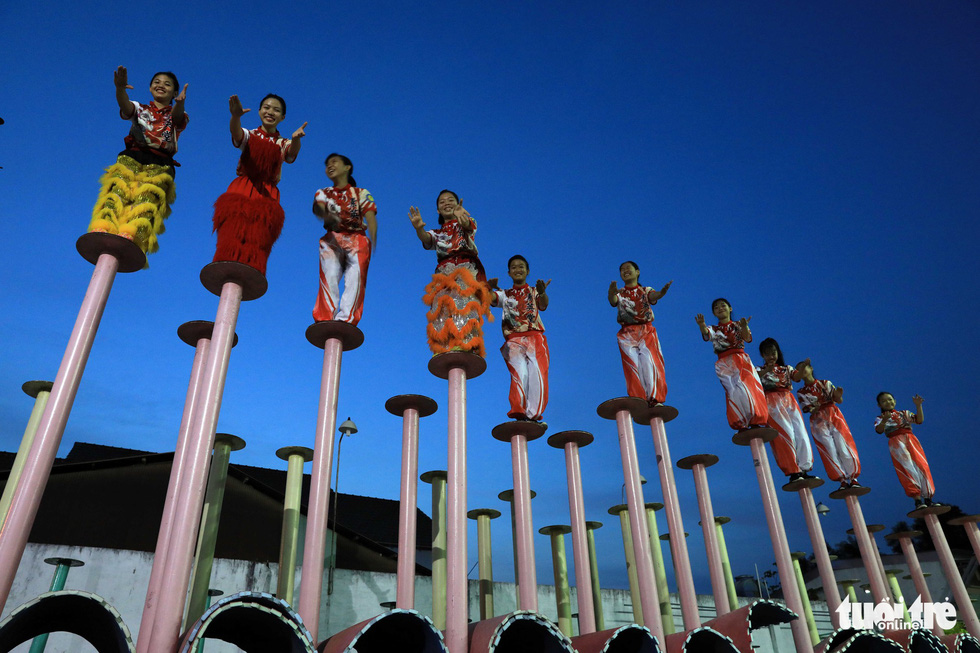Lion dance and dragon dance are traditional dancing techniques usually done in festive celebrations in Vietnam, such as shop grand opening or the Lunar New Year festival, which began last week.
As their names suggest, lion dancers, donning lion costumes, mimic the movements of the animal to bring good luck and fortune, whereas dragon dancers manipulate a long flexible figure of a dragon using poles positioned at regular intervals along its length.
Dancers are usually kung fu practitioners so as to afford the strength and skill needed for the performances, which explains why female followers of the techniques are rare.
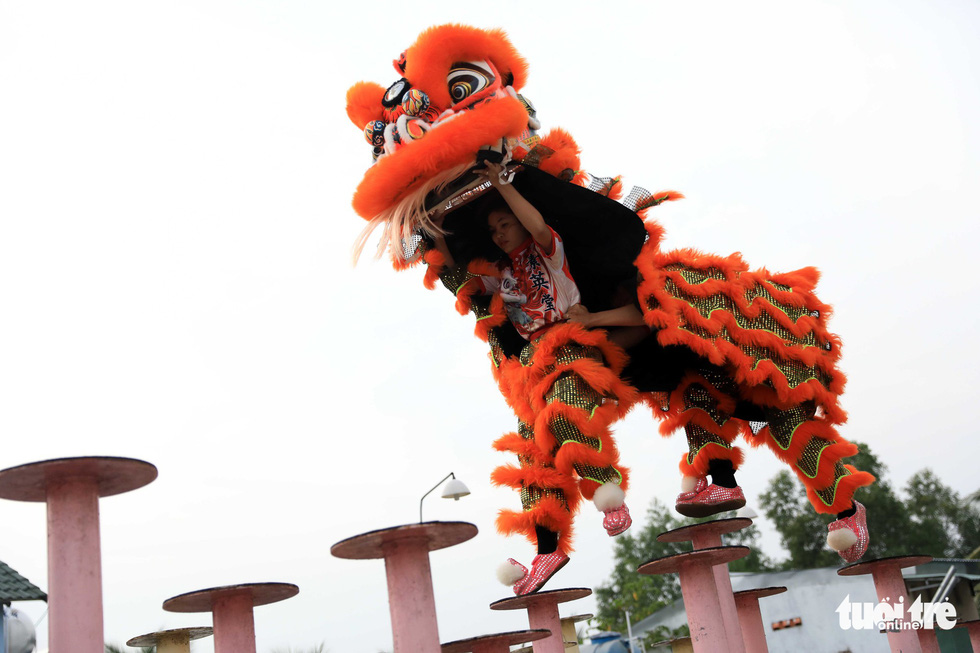
Tu Anh Duong, a lion and dragon dance school based in the Mekong Delta city of Can Tho, stands out as the only of its kind to have both the male and female troupes.
The female team consists of 22 members, with the youngest just turning ten, and the oldest being 35 years old.
While all team members are capable of performing both dragon and lion dances, five of them are Vietnamese record holders in high-pole and pole-climbing lion dances, the two most difficult techniques.
These high-pole lion dancers are usually skillful practitioners of the kung fu style Meihua Quan, literally known as Plum Blossom Boxing, which allows them to perform jaw-dropping stunts on a row of poles, standing one to three meters high and located 0.7-1.8 meters apart from one another.
In the pole-climbing performance, a dancer in the lion costume will have to ascend a pole from six to ten meters high and showcase different stunts atop the pillar.
The Tu Anh Duong female dancers have spent years on painstakingly practicing to master these strenuous skills, and none of them are unfamiliar with injuries during training.
“There were times when my injuries were so severe that I thought I would never make it,” Le Yen Quyen, a 24-year-old team member who holds five Vietnamese records in high-pole and pole-climbing lion dances, told Tuoi Tre (Youth) newspaper.
“But then I focused my mind on the future when I would be able to ‘conquer’ those poles and put those painful feelings aside to continue training.”
The effort pays off as Tu Anh Duong is the only school to send a female team to the national dragon and lion dancing contest every year, something that is unprecedented even with international competitions.
Below are some photos of the Tu Anh Duong female team of lion dance.

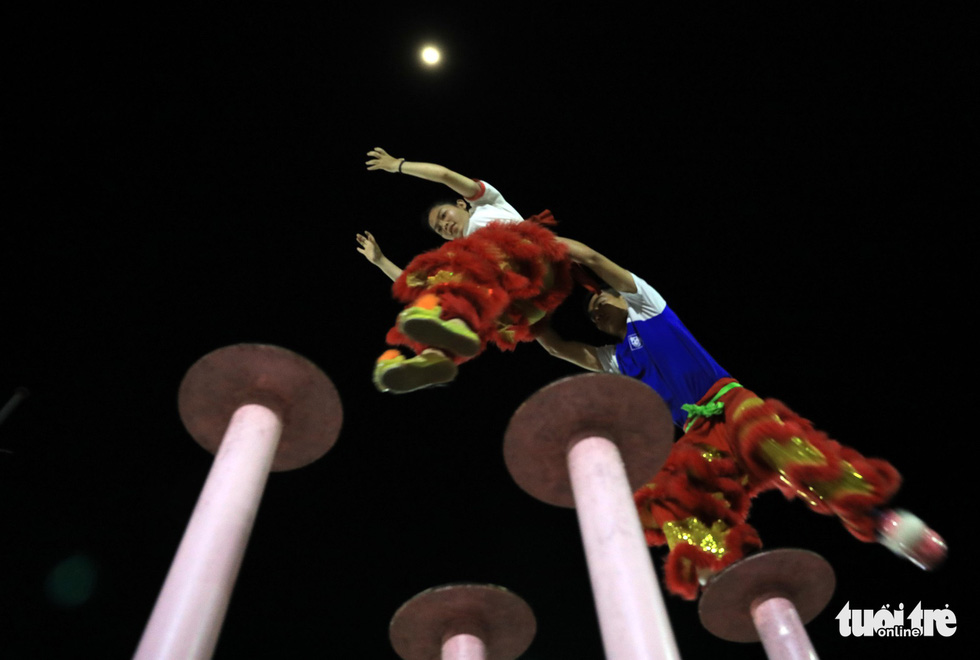
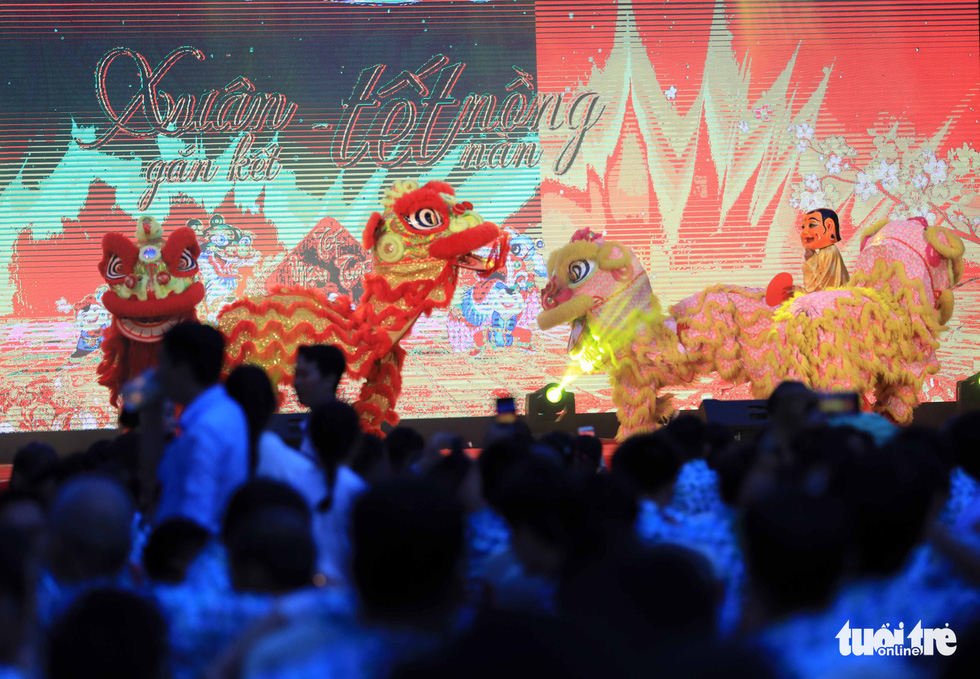
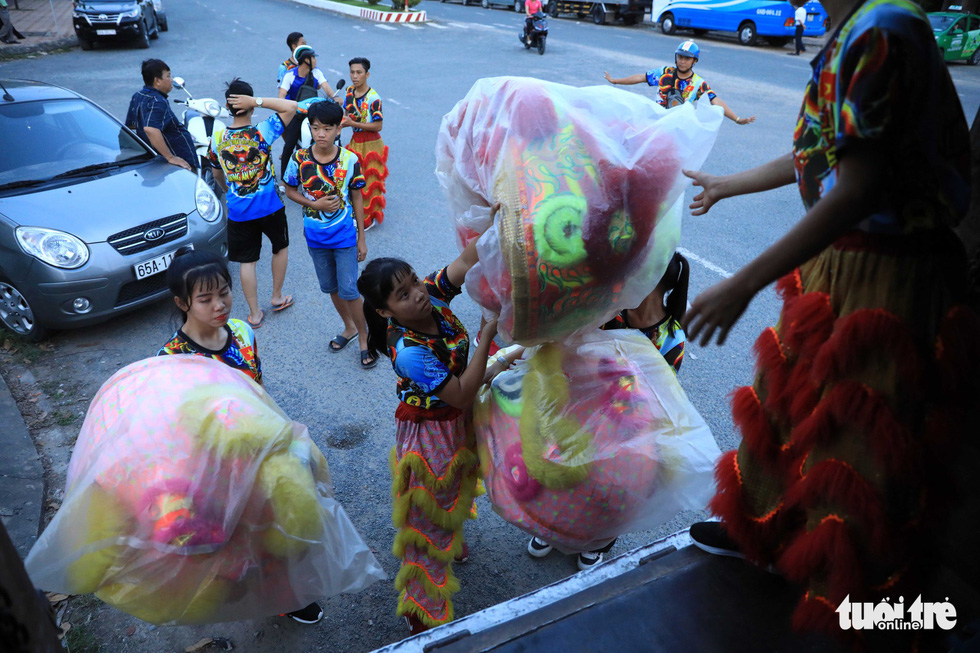
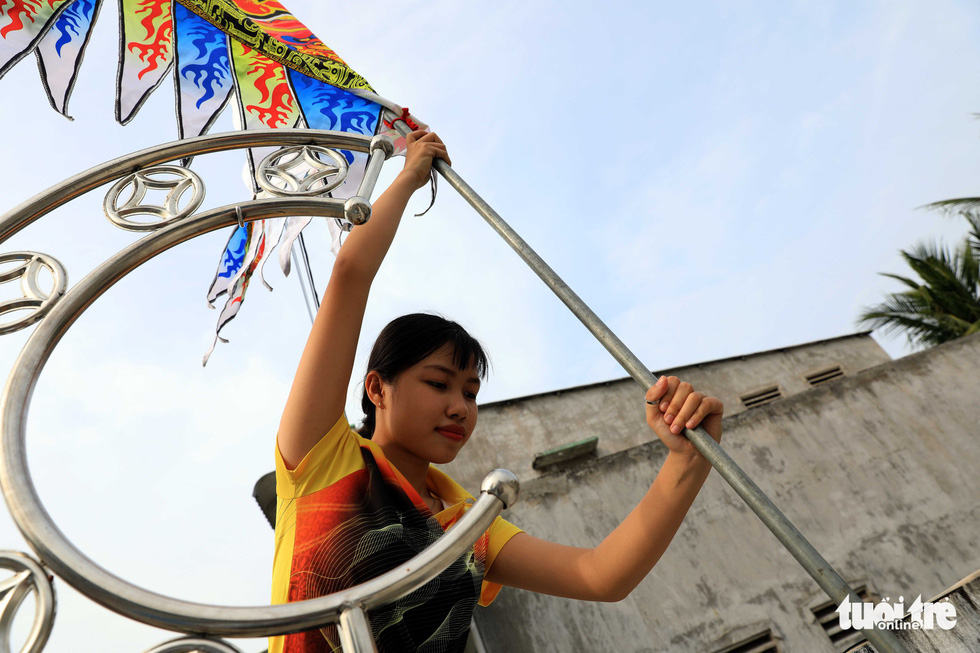
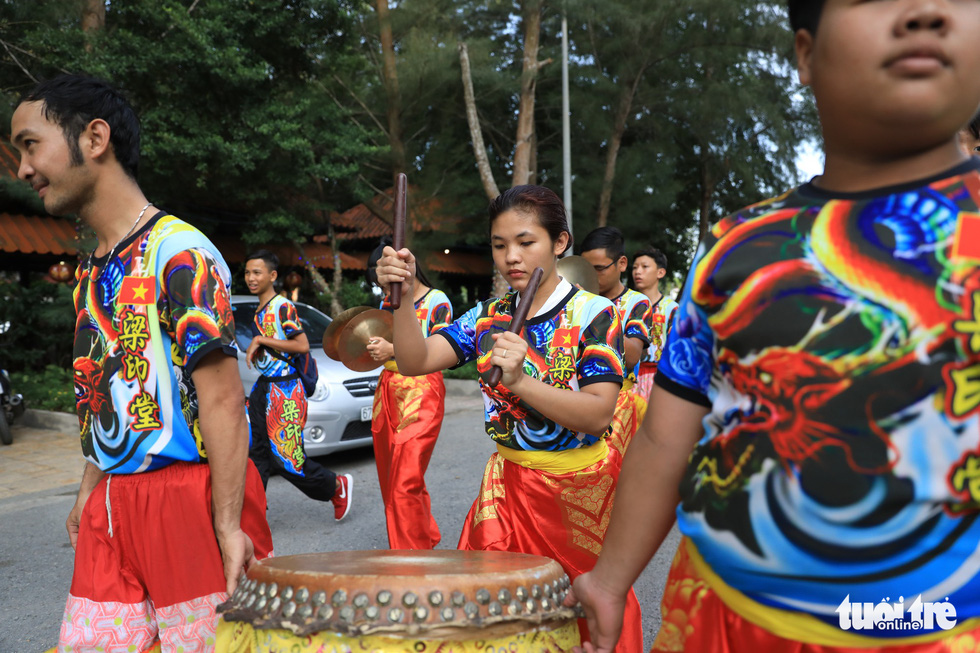
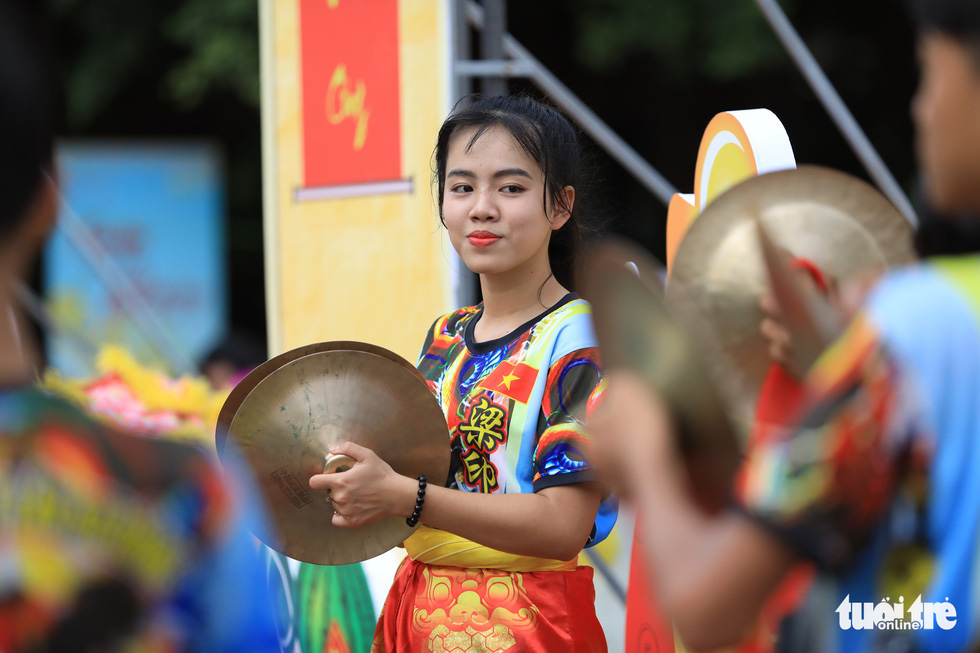
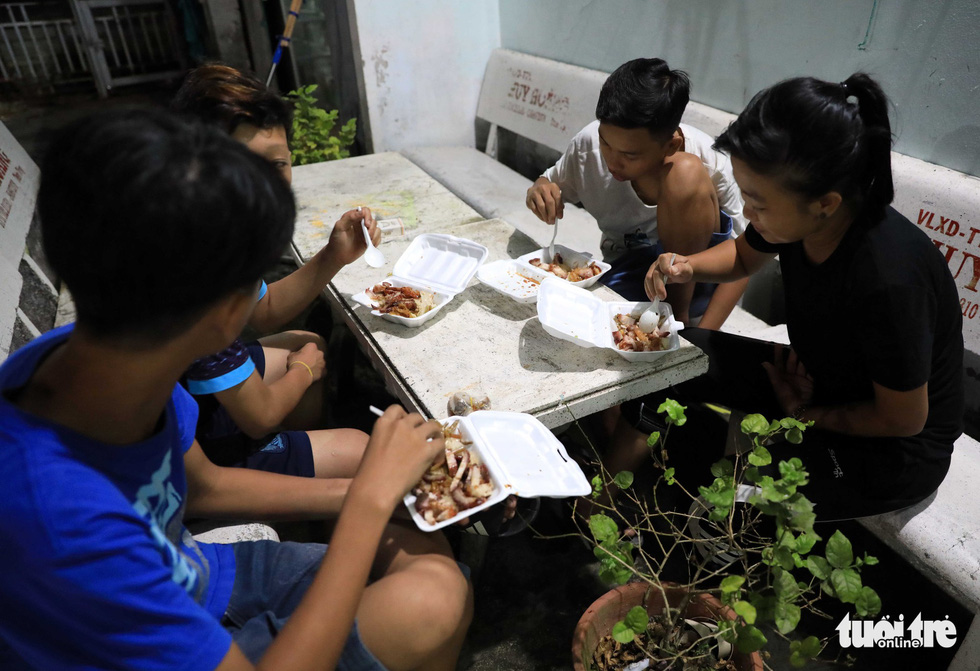
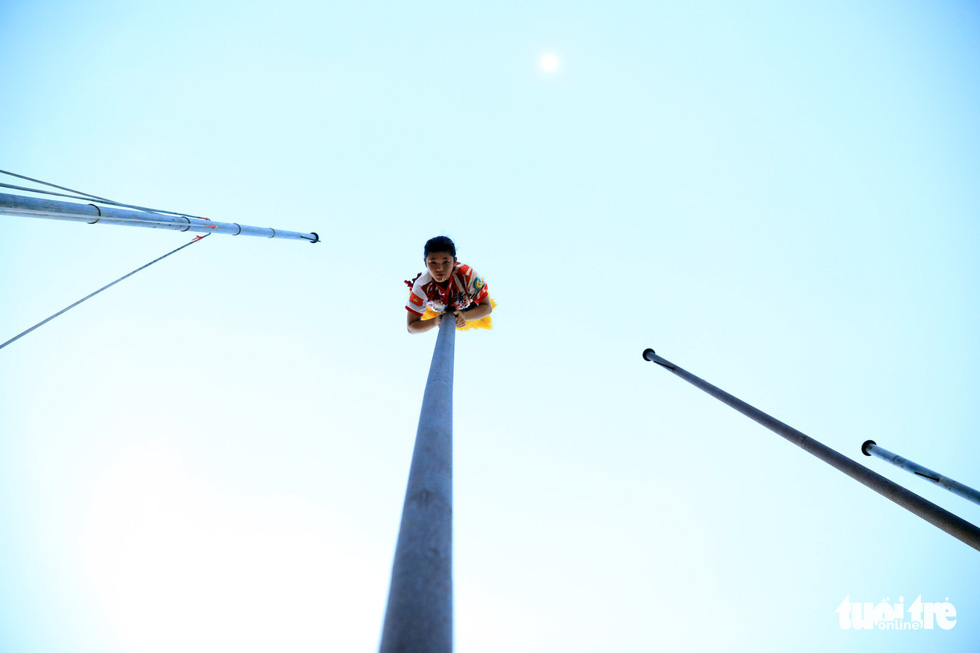
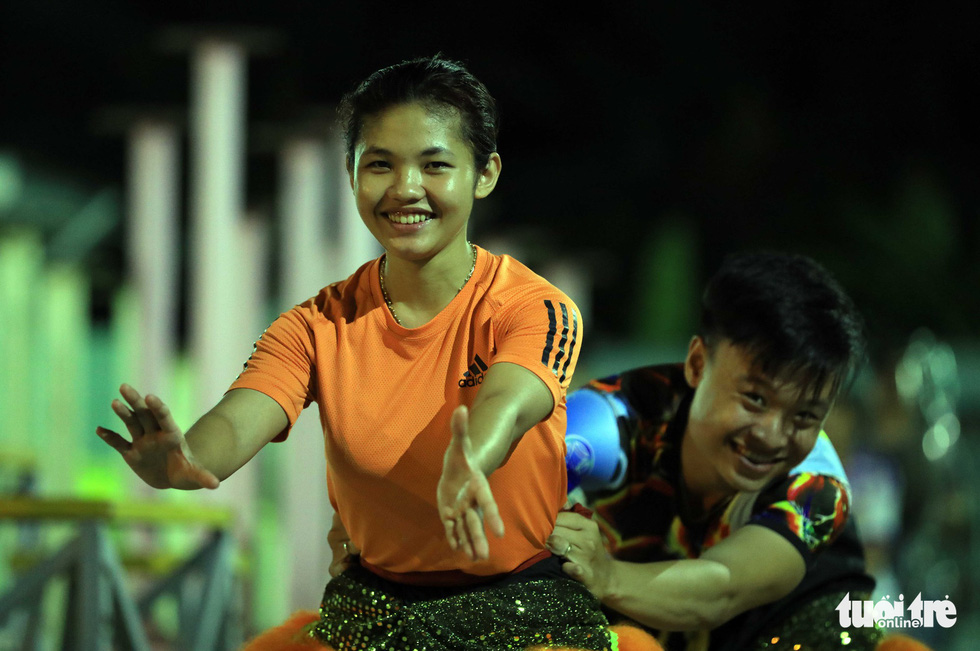
Like us on Facebook or follow us on Twitter to get the latest news about Vietnam!



